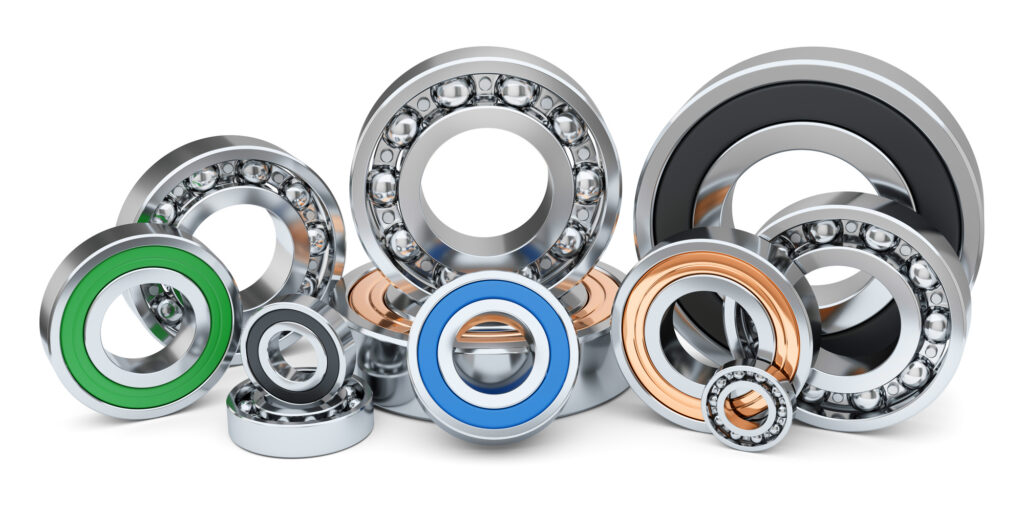Bearings are essential mechanical components that support rotating shafts and reduce friction between moving parts. They are found in a wide range of applications, from bicycles to industrial machinery. This comprehensive guide will explore the different types of bearings, their functions, applications, and key characteristics.

Bearings are essential mechanical components that support rotating shafts and reduce friction between moving parts. They are found in a wide range of applications, from bicycles to industrial machinery. This comprehensive guide will explore the different types of bearings, their functions, applications, and key characteristics.
Classification of Bearings
Bearings can be classified based on their construction, function, and application. Here are some of the most common types of bearing:
1. Rolling Element Bearings
- Ball Bearings: Contain steel balls rolling between inner and outer races. They offer low friction and high load capacity.Ball Bearing
- Roller Bearings: Contain cylindrical or tapered rollers rolling between inner and outer races. They are suitable for heavy loads and high speeds.
- Cylindrical Roller Bearings: Have cylindrical rollers that provide high radial load capacity and moderate axial load capacity.
- Tapered Roller Bearings: Have tapered rollers that can carry both radial and axial loads.
- Needle Roller Bearings: Have small, needle-shaped rollers that offer high load capacity in a compact design.
Roller Bearing
2. Sliding Element Bearings
- Sleeve Bearings: Also known as journal bearings, they consist of a cylindrical bushing that rotates around a shaft. They offer smooth operation and are suitable for moderate loads and speeds.Sleeve Bearing
- Hydrodynamic Bearings: Rely on a fluid film to separate the bearing surfaces, reducing friction and wear. They are suitable for high-speed and heavy-load applications.Hydrodynamic Bearing
- Hydrostatic Bearings: Use pressurized fluid to support the load and maintain a controlled clearance between the bearing surfaces. They are ideal for applications requiring high precision and low friction.Hydrostatic Bearing
- Aerostatic Bearings: Similar to hydrostatic bearings but use air instead of fluid to support the load. They are used in high-precision applications where contamination is a concern.
Bearing Materials
Bearings can be made from various materials, including types of bearing:
- Steel: The most common material for bearings, offering good strength, durability, and corrosion resistance.
- Cast Iron: Used for heavy-duty applications where high load capacity is required.
- Bronze: Offers good wear resistance and corrosion resistance, often used in marine and industrial applications.
- Plastics: Used for low-load and low-speed applications where noise and vibration reduction are important.
- Ceramics: Offer high hardness, low friction, and corrosion resistance, making them suitable for high-performance applications.
Bearing Lubrication types of bearing
Proper lubrication is essential for the smooth operation and long life of bearings. Lubricants can be liquid (oil or grease) or solid (grease or dry lubricants). The choice of lubricant depends on factors such as the bearing type, operating conditions, and the properties of the lubricant.
Bearing Selection Considerations
When selecting a bearing, consider the following factors:
- Load: The type and magnitude of the load that the bearing will experience.
- Speed: The rotational speed of the shaft.
- Operating Environment: The temperature, humidity, and corrosive conditions.
- Lubrication: The type of lubricant required and the frequency of lubrication.
- Maintenance Requirements: The ease of maintenance and inspection.
- Cost: The initial cost and ongoing maintenance costs.
Conclusion
Bearings are critical components in many mechanical systems, and selecting the right type of bearing is essential for ensuring efficient and reliable operation. By understanding the different types of bearings, their functions, and the factors to consider when selecting them, you can make informed decisions and optimize the performance of your machinery.
